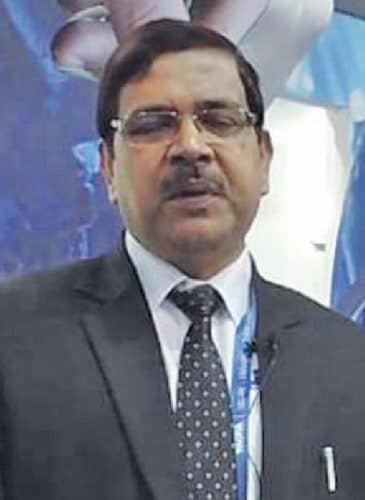Technology experts in India are constantly striving to connect the remote corners of the country and provide the rest with stronger and reliable networks. As a step towards making this vision a reality, Centre of Development of Telematics (C-DOT) recently revealed its innovative satellite-based Wi-Fi solution and an AI-powered city-scale facial recognition-based surveillance system. Tanay Krishna, marketing head, C-DOT, talks to Baishakhi Dutta about the technology.

Q. What’s great about your new satellite-based Wi-Fi technology?
A. The new satellite-based Wi-Fi acts as an access device, that is, using a satellite it creates a hotspot for transmitting Wi-Fi signals based on line-of-sight, which could be up to a few kilometres. The broadband wireless terminal integrated with the satellite is a point-to-point and point-to-multipoint system. With this setup, Internet access to even remote islands is a possibility.
Q. How about the cost?
A. Since it is a business proposition, it will be difficult to come up with a fixed-price quotient. Main components here are the satellite and data rate. While the device is not costly, the satellite linked to it makes it worth it.
Q. Where do you plan to deploy this product?
A. It will be typically used for government projects, since C-DOT is a government R&D body. Apart from the North-East or islands like Andaman & Nicobar, this product can also serve as an excellent mode of connectivity in disaster situations, such as the recent Kerala floods, where a link had to be set up quickly to provide consistent connectivity.
Q. Are you collaborating with someone for deployment?
A. We have just started exploring that. There are players that we can collaborate with, such as BSNL or private players like Airtel.
Field trials are deployed by R&D firms. Once tested, the technology will be transferred for manufacturing.
Q. What are the features and application areas of the surveillance system?
A. Designed using our own algorithm, the AI-based facial recognition system is a strategic and intelligent space system that can detect a person amidst a crowd or another special situation. We are working with IIT-Delhi and several other partners to build the system so that we can license it.
It can be used for personal security purposes. Currently, the technology is in Beta stage. Once the trials are done, it will be open for licensing and transfer.
Q. Is it aligned with Smart City mission?
A. No, not yet! The product is made to strengthen security and surveillance intelligence. But there can be multiple use cases for one technology.
Q. How will you ensure data security and privacy?
A. Whenever we carry out surveillance, we let the citizens know that they are under surveillance.
We aim to use this technology to help detect missing people and to gather other valuable information that could help the police or governments.
Q. Have you faced any challenges?
A. One of the biggest challenges was to build the database of faces, since facial recognition has many possibilities in terms of age, gender, emotions, etc. Creating an accurate database is tedious and we are using image processing technology for the same. This also helps us maintain accuracy and avoid duplication.
Q. C-DOT has partnered with UK institutions for 5G test beds. What tests and trials will this enable?
A. 5G testing comprises a lot of what C-DOT has developed over the years, one example being optical backhaul. You will find test equipment that can be used to follow the backhaul. We are building the front interfacing and axis part now, and plan to bring in testers, protocols and hardware equipment. For that, we have spoken with some IITs.
We are also planning to have an Internet of Things (IoT) platform integrated with this kind of a solution.
Q. Is C-DOT collaborating with any foreign institutes besides Indian?
A. It is a collaborative framework where R&D is meeting academia. A university from the European Union that was working on 5G radio resource protocols showed interest. C-DOT complements their software. The collaboration will build mesh models that can be placed and plugged so that this thing could be automated and sped up.
Second, the theme, hue and colour are similar because both speak the same thing.
It is good to talk to people where you can learn and get exposed to new technologies and have free trials and tests. So, we felt a good connection. This project is still new. So far, we have exchanged some lectures along with information and ideas on the degree of technology.
Q. C-DOT has been an aggressive promoter of standardisation of IoT and M2M solutions. How far has that come?
A. The biggest role that C-DOT plays is to tell governments what is right and what is wrong as far as standardisation is considered. Standardisation, if not taken seriously, can lead to serious security threats.








